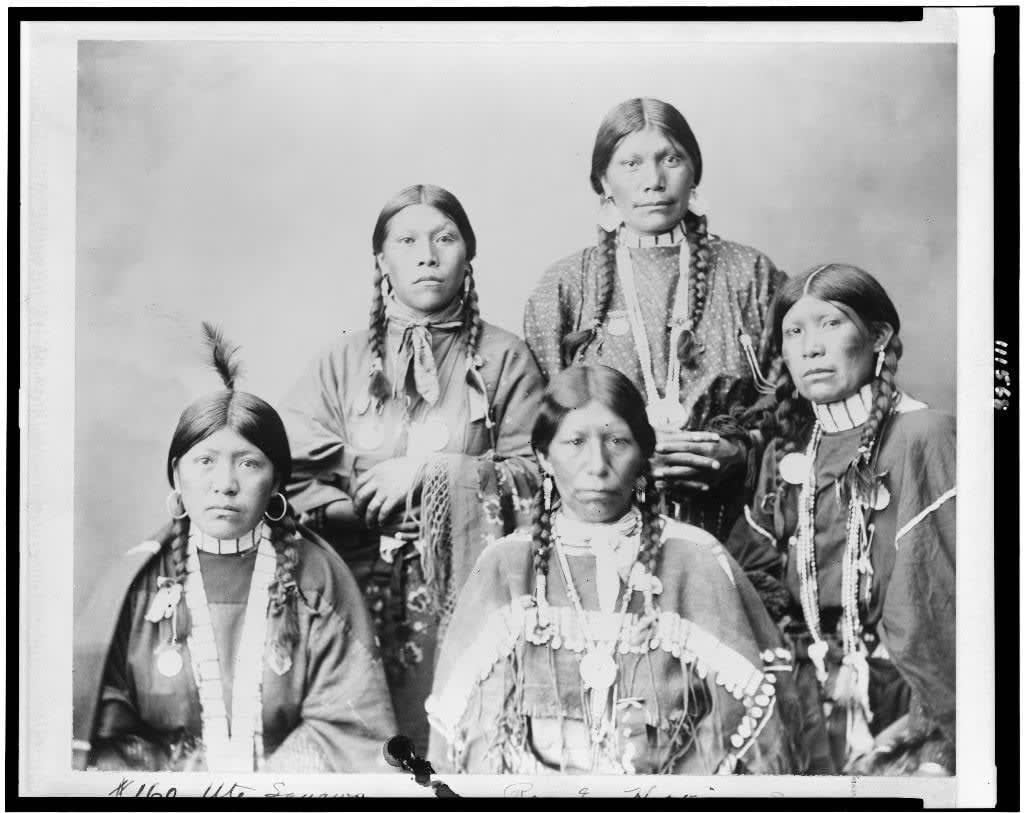Willoughby: The Utes and Aspen — More Unknown Than Known


Editor’s note: This is the first of two parts.
Over the years, there have been references about Ute history as it relates to Aspen, most conjecture at best. In addition, what we have is the Anglo version rather than the Native American story. This week, and next, I will add to the conjecture and reduce the mythology.
Aspen was once called Ute City (Grand Junction was also first called Ute), but the reality is not too interesting. In 1879, Henry Gillespie came over Independence Pass to scout the area for mining claim locations and filled for a town site. He named it Ute City.
There is no record of why he picked that name, but we can speculate. At the time, the few prospectors in the area were warned about threatening Ute activity (more about it next week), and most left the area, so the Utes were likely on his mind. However, at the time, there was no fondness for Utes among miners venturing into what had formally been Ute territory.
Months later, during a February winter storm, B. Clark Wheeler’s party arrived with the same goal as Gillespie. According to the Aspen Daily Chronicle of 1889, Wheeler’s town site was given the name Aspen by his partner, Charles Hallam. The town sites overlapped, but the Wheeler one prevailed. Locals still called the area that was part of Wheeler’s town site, closest to the mountain, Ute City.
Anglo telling does not mention Utes being in Aspen. My father was told by John Atkinson, one of the early pioneers, that someone Atkinson knew had seen Native American maidens bathing in a river, a male boarding house yarn not likely an actual event.
Looking at what we do know about Ute history does not add much. The general belief is Utes were in southwest Colorado seven centuries ago and occupied all of Colorado by 1600.
There were 12 bands spread over Colorado and sections of the border states. Some favored the White and Yampa River drainage, hunting in the higher elevations in the summer, and wintering at lower elevations in Utah. Other bands had a similar existence in the San Juan Mountains. At least one band spent part of the year in Middle Park, where there were buffalo. The Colorado River system — include the Roaring Fork, Crystal, and Fryingpan — was home to the Parianuc band, wintering in the Grand Junction area.
I remember explaining Colorado history to Easterners who were surprised that Santa Fe, New Mexico, was founded in 1610, a decade before the Mayflower landed. Spanish explorers entered Colorado as early as 1596. Had early explorers who ventured into Colorado gone a bit farther, they might have found gold, and Denver might have been named San Francisco. (The Spanish explorer Juan de Oñate, who first found the Arkansas River, named it El Rio de San Francisco.)
The Utes interacted with the Spanish, who wanted Ute elk and deer skins. Like in other areas, the Spanish enslaved Utes. There was one known Ute escape in 1637 where Utes ended up with horses. It is generally believed that Utes acquired Spanish horses before then. Either way, Utes were early masters of horses, changing their lifestyle and extending their range of forays. They also acquired guns from the Spanish. Once they acquired horses, they raided other tribes, taking food, and enslaving some, creating tribal hatred and rivalry.
A recent estimate is that at the time the Spanish entered the area, the Ute population was between 5,000 and 10,000. Compared to the total area they roamed, they could have roamed without being noticed. The second treaty (1874) assigned them 16 million acres, larger than five combined states. In 1929, there were only 835 Utes left in Colorado. The only sighting of a Ute anywhere near Aspen recorded in newspapers was in 1887 near Rifle.
There are three Ute Indian reservations: one in Utah, the Uintah-Ouray; the Southern Ute and Mountain Ute, both in southern Colorado. My sister worked for the Southern Ute tribe in the 1970s as newspaper editor and later as secretary of the chief. She asked if they had any oral history about using/residing in the Aspen area; they did not. However, the bands nearest Aspen are the Uintah-Ouray group.
Evidence suggests they hunted deer and elk in the Aspen area, but we do not know if that happened once a decade or once a year. The elk and deer would likely then have been, as they are now, at higher elevations, not in Aspen. The Office of Archaeology and Historic Preservation shows 50 known archeology sites within 12.5 miles of Aspen. Of the 50, two are Desert Side-notched arrow points, the type made by Utes. There were also several Archaic-age spear points that date back 1,000 to 5,000 years or more.
There is a story about Utes setting a fire on Burnt Mountain to warn off miners. That is likely myth, more likely a lightning fire, as Burnt Mountain is not close to where prospectors were when the story says it happened, and the closest Ute tribe was in the Meeker area.
Next week: The sad saga of miners and Utes.
Tim Willoughby’s family story parallels Aspen’s. He began sharing folklore while teaching at Aspen Country Day School and Colorado Mountain College. Now a tourist in his native town, he views it with historical perspective. Reach him at [email protected].
By: Tim Willoughby | The Aspen Times \ May 20, 2023